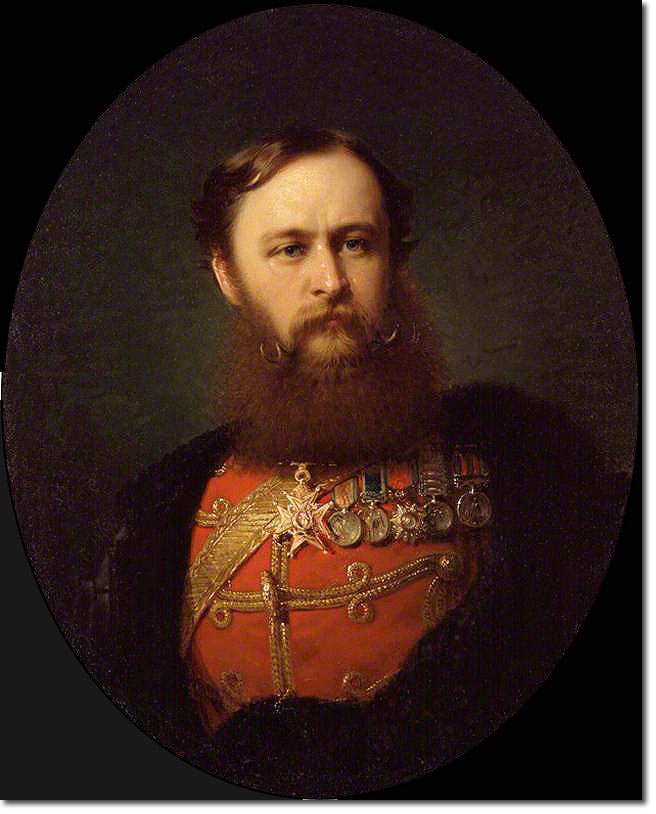|
|


|
|
Major-General Crealock was in command of the Coastal Column, First Division. He arrived on 1st April 1879 and was tasked with establishing a staging post on the Amatikulu River which he named Fort Crealock. He was then required to set up another supply depot on the Inyezane River which was named Fort Chelmsford. Having established these two depots he was to proceed to the Zulu kraals at ema-Ngwene and Undi just south of the Umhlatuzi River, and destroy them. The supplies needed to stock the depots far exceeded the capacity of the wagons at Crealock's disposal so several trips back and forth were required. It was to take until 19th June before the whole of the 1st Division was concentrated with its supplies at Fort Chelmsford. It took another three days for his column to travel six miles to the next river, the Umlalazi, where Fort Napoleon was built. The rate of progress caused his column to be nicknamed Crealock's Crawlers. Luckily he had Naval officers with him who were able to advise him on how to transport supplies by boat up the coast to avoid the tiresome use of bullock carts. Port Durnford was established and the Naval Brigade rigged up a system of hawsers whereby supplies could be winched in from ships lying offshore.
There were two Crealock brothers serving in Zululand at this time. Both were artists, but Henry Hope Crealock was the more senior by 5 years and 3 ranks. He was born in Langeston, Devon on 31st Mar 1831 and joined the 90th LI on 1848. He fought in the Crimea being mentioned in despatches for his attacks on the Redan. He served in Constantinople and was a major in 1856. The following year he was DAQMG on the China Expedition and then went to India to campaign in Rohilikand during the Mutiny. He then served on the staff of Sir W R Mansfield and was Military Secretary to Lord Elgin in China, remaining there during the China War of 1860. He became a Colonel in 1864 and Major-General in 1870. He had a spell as Military Attache in Vienna and was then appointed QMG in Ireland from 1874 to 1877. After the Zulu War he became a lieutenant-general and retired in 1884. He died in London on 31st May 1891 and was buried in Littleham near Bideford in Devon. Lord Wolseley wrote disparagingly about many people and was very scathing towards the Crealock brothers. Wolseley, who was sent to take over command of the war was in a very bad mood when he finally caught up with Crealock's column. He had had a frustratingly slow journey into Zululand and was extremely angry that Chelmsford was not replying to his messages. He wrote of Sir Henry that he was: "..dressed like a guest at an artist's ball. He wore a sombrero with a long peacock feather and an imitation pugaree tied on one side in what he believed to be picturesque artistic carelessness. He had one wagon designed as a movable henhouse so that he might have fresh eggs for breakfast. He even telegraphed for 6 milch cows to be sent forward so that he might not be deprived of tea whilst campaigning." The portrait shows Henry Crealock dressed in the scarlet staff tunic with the CB around his neck. His flamboyant personality is hinted at in the rather unusual curls at the ends of his moustache. |
Zulu War | Zulu War Significant Individuals
Armed Forces | Art and Culture | Articles | Biographies | Colonies | Discussion | Glossary | Home | Library | Links | Map Room | Sources and Media | Science and Technology | Search | Student Zone | Timelines | TV & Film | Wargames
